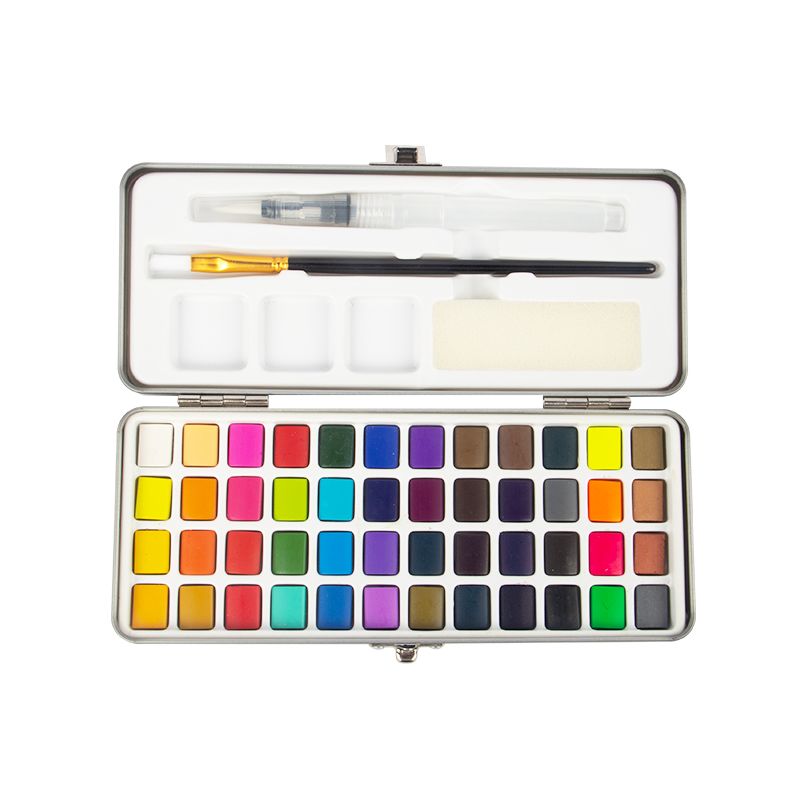- English
- Español
- Português
- русский
- Français
- 日本語
- Deutsch
- tiếng Việt
- Italiano
- Nederlands
- ภาษาไทย
- Polski
- 한국어
- Svenska
- magyar
- Malay
- বাংলা ভাষার
- Dansk
- Suomi
- हिन्दी
- Pilipino
- Türkçe
- Gaeilge
- العربية
- Indonesia
- Norsk
- تمل
- český
- ελληνικά
- український
- Javanese
- فارسی
- தமிழ்
- తెలుగు
- नेपाली
- Burmese
- български
- ລາວ
- Latine
- Қазақша
- Euskal
- Azərbaycan
- Slovenský jazyk
- Македонски
- Lietuvos
- Eesti Keel
- Română
- Slovenski
- मराठी
- Srpski језик
How do you make solid watercolor?
2024-01-22
Solid watercolor, also known as watercolor pans or cakes, are a convenient and portable form of watercolor paint. Making your own solid watercolor involves creating a mixture of pigments and binders, which is then poured into a mold and allowed to dry. Here's a basic guide on how you can make solid watercolor:
Materials Needed:
Watercolor Pigments: Watercolor pigments come in powder form and are available in various colors. Choose the pigments you want to use for your watercolor.
Binder: The binder is the substance that holds the pigments together and allows them to adhere to paper when activated with water. Gum arabic is a common binder for watercolors.
Palette: You'll need a palette or small containers to mix and store your watercolor. This can be an empty watercolor pan or any small, shallow container.
Water: To mix the pigments and binder, you'll need water.
Mixing Tools: Use a palette knife or a mixing spatula for combining the pigments and binder.
Mold: You'll need a mold to shape the watercolor mixture into solid pans. This can be an empty watercolor pan, small silicone molds, or ice cube trays.
Steps:
Prepare Pigments: Measure out the watercolor pigments you want to use. You can mix different pigments to create custom colors.
Mix with Binder: In a palette or mixing container, combine the pigments with the binder (gum arabic). Gradually add water and mix until you achieve a smooth, paste-like consistency. The goal is to create a mixture that can be easily poured.
Pour into Mold: Pour the mixture into your chosen mold. If you're using an empty watercolor pan, fill it to the top. If using silicone molds or ice cube trays, fill each section.
Drying: Allow the watercolor mixture to dry completely. This can take a day or more, depending on the thickness of the mixture and environmental conditions.
Remove from Mold: Once the solid watercolor has dried and hardened, carefully remove it from the mold.
Let Cure: Let the watercolor cure for a few days. This allows the watercolor to set fully and ensures that it's ready for use.
Activate with Water: To use the solid watercolor, wet your brush and rub it on the surface of the pan to pick up the color. Then, paint on your paper as you would with traditional watercolors.
By making your own solid watercolors, you can create a customized palette with the colors you prefer. Experimenting with different pigments and ratios allows you to achieve unique shades and textures in your watercolor paintings.





